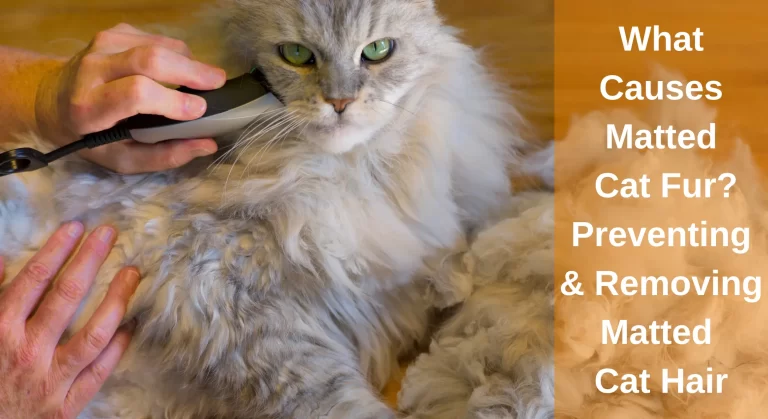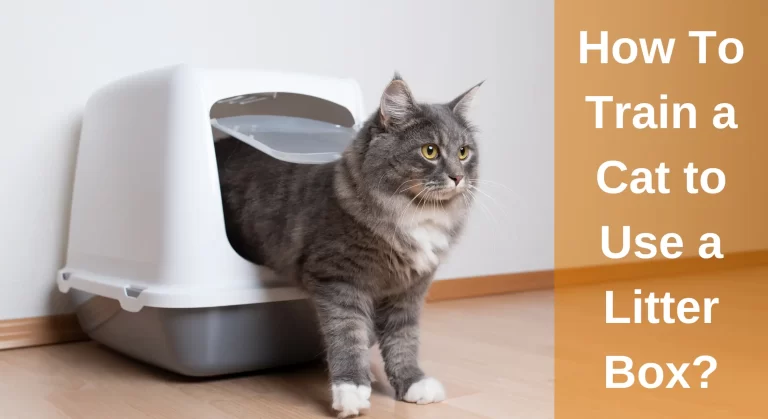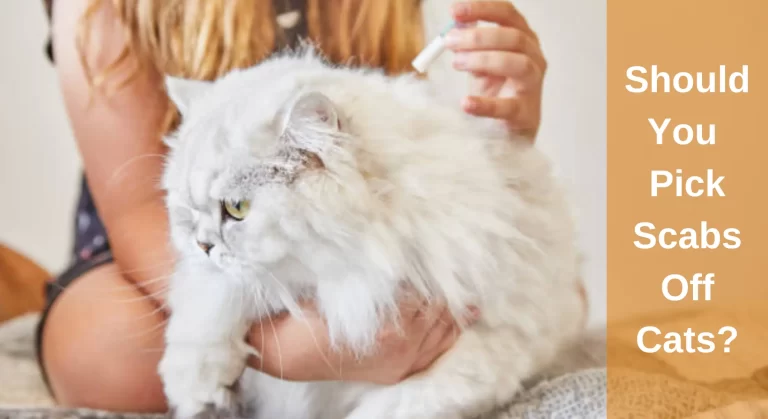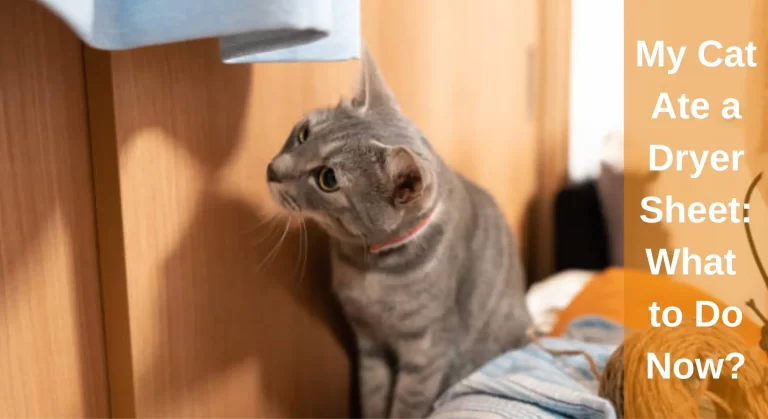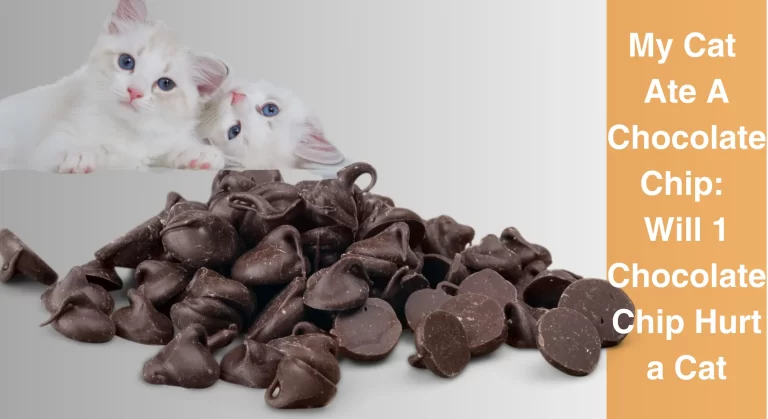Is Peperomia Toxic To Cats? Is Peperomia a Safe Plant Choice for Your Feline Friend?
There is nothing more exciting for a cat than exploring everything new and exciting in its environment. It involves licking, chewing, and eating! Because of this, you should check whether any new plants you intend to purchase are safe or toxic for cats before planting them.
Is peperomia toxic to cats? Peperomia is safe and non-toxic to cats, according to the ASPCA! It’s important to note that some species may contain mild toxins. The toxicity levels can vary, and specific compounds present in Peperomia plants might cause mild gastrointestinal discomfort if ingested in large amount.
Peperomia obtusifolia, Watermelon peperomia, and Peperomia caperata are some of the most well-liked and feline-safe species. These plants are pretty popular among cats, and they’re low maintenance, making them an attractive option for pet owners.
As part of this article, we’ll explain exactly what you need to know about Peperomia plants and their toxicity level, along with some other cat-friendly houseplants to consider.
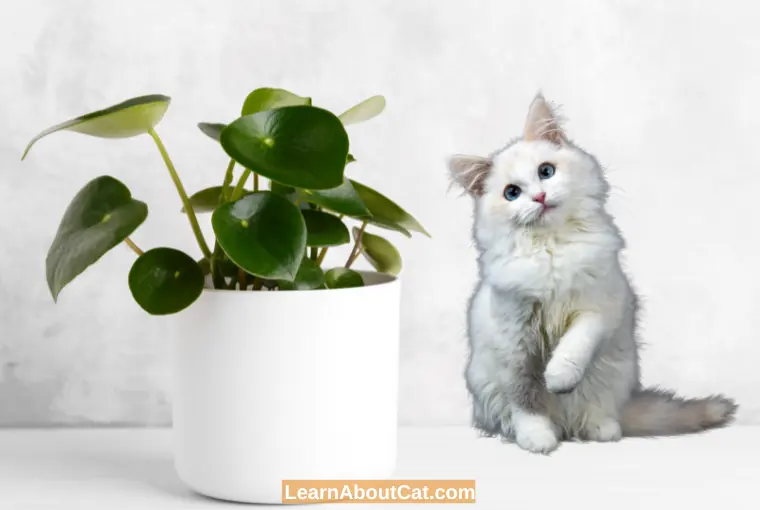
What Is Peperomia? A Closer Look
Peperomia, belonging to the Piperaceae family, encompasses a vast array of plant species, with over 1,000 recorded variations to date. These plants have earned their name owing to their striking resemblance to the “pepper” plant. Peperomias have become a beloved choice among homeowners, primarily due to their ease of care and aesthetically pleasing appearance, making them a delightful addition to any indoor space.
Common Names
Varieties of Peperomia are known by various common names, making it important to familiarize yourself with these monikers to avoid any confusion when encountering a Peperomia plant labeled with a different name. Here are a few examples:
- Baby rubber plant
- Pepper elder
- Radiator plant
- Shining bush plant
- Emerald ripper pepper
Moreover, the Peperomia genus boasts a diverse collection of over 1,500 species. Among these, several popular varieties are worth mentioning, including:
- Watermelon Peperomia
- Red-Edge Peperomia
- Teardrop Peperomia
- Silverleaf Peperomia
- Japanese Peperomia
- Jayde Peperomia
- Ripple Peperomia
- Belly Button Peperomia
- Cupid Peperomia
- Suzanne Peperomia
Is Peperomia Toxic To Cats?
According to the ASPCA, peperomia is non-toxic and cat-friendly, which is fantastic news. These plants appear to be immensely popular with cats. However, it’s important to bear in mind that even non-toxic plants can potentially cause stomach upset if consumed in large quantities.
It is constantly accessible in various hues and is completely safe for cats. The peperomia plant is still a little one that requires wet soil and weak indirect light.
Baby rubber plants require little care and do their best in indirect sunlight. The more prominent cousin of the Baby Rubber Plant, the Rubber Tree, should be avoided by cats.
Check Out: Can Cats Eat Sage?
Which Peperomia Species Are Toxic to Felines?
All parts of the peperomia plant are believed to be non-toxic. Since there are so many peperomia species, it is always possible to run upon a rare or freshly tamed species that is somewhat toxic.
But whatever species or cultivars you discover at a nursery will be safe for people and animals, so you can be sure of that.
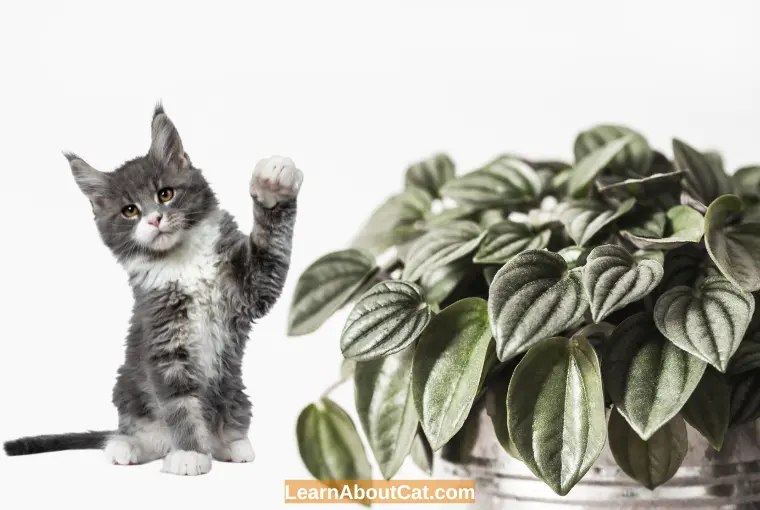
Symptoms of Peperomia Toxicity
Although technically peperomia is non-toxic, cats and dogs who seek to overeat may experience some toxic-like effects from peperomia plants. Overindulgence may result in the following:
- Vomiting
- Stomach Upset
- Diarrhoea
- Appetite loss
- Constipation
- Nausea
- Irritability
Can Cats Eat Peperomia Rotundifolia?
Since Peperomia Rotundifolia is non-toxic, cats can eat it without risk. Although the plant is susceptible to overwatering and might wilt or develop scab-like areas on its leaves, it needs sufficient humidity, especially in the summer.
Is Red Edge Peperomia Safe for Cats?
Red edge peperomia is secure for cats. The Peperomia Ginny is an excellent indoor cat-safe plant since it grows slowly, thrives in low light, and fits in small spaces.
It works wonderfully to purify the air as well. The large, bordered leaves of the Peperomia Ginny have pink and white colours. On top of long spikes, it may yield small, unscented blooms.
Also, Check Out: Can Cats Eat Aloe Plant?
Is Leaf Peperomia Safe For Cats?
Leaf peperomia is secure for cats. The large genus Peperomia has more than 1000 different types of little perennial plants that thrive indoors. A room’s attraction is considerably increased by peperomia.
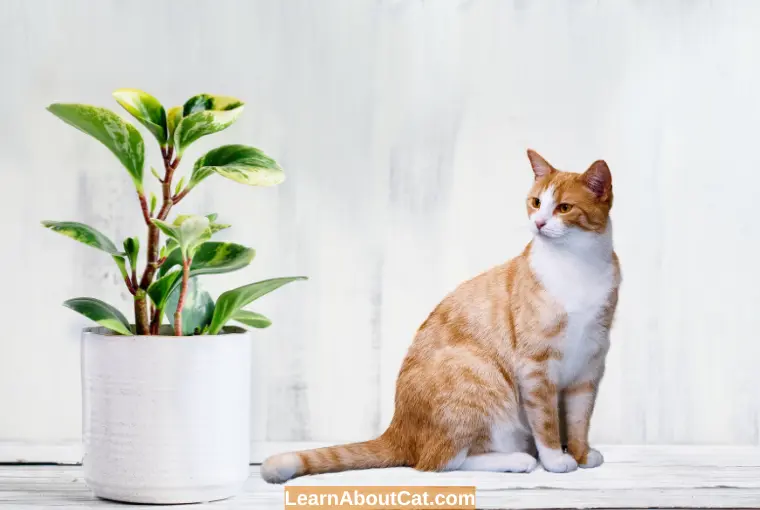
The majority possess succulent properties that enable them to withstand occasional watering, making them an excellent choice for the less diligent gardener.
These plants don’t have delicate petals, so even if your cat chews on some leaves or is harsh with them, it won’t diminish how lovely they are.
Find Out: Are Roses Poisonous to Cats?
Is Variegated Peperomia Safe for Cats to Eat?
Variegated peperomia is entirely safe for cats. They keep these tiny cuties happy as they are not at risk of ingesting poison from African violets or variegated peperomia.
The animals enjoy dry heads but wet feet with the proper amount of sunlight shining on them.
Is Watermelon Peperomia Toxic to Cats?
The plant known as watermelon peperomia does not pose any danger and isn’t toxic to cats. You can have this as an indoor plant: a watermelon peperomia with purple stems and leaves resembling watermelons. Never use the excuse that you have enough indoor plants since there are never enough of them.
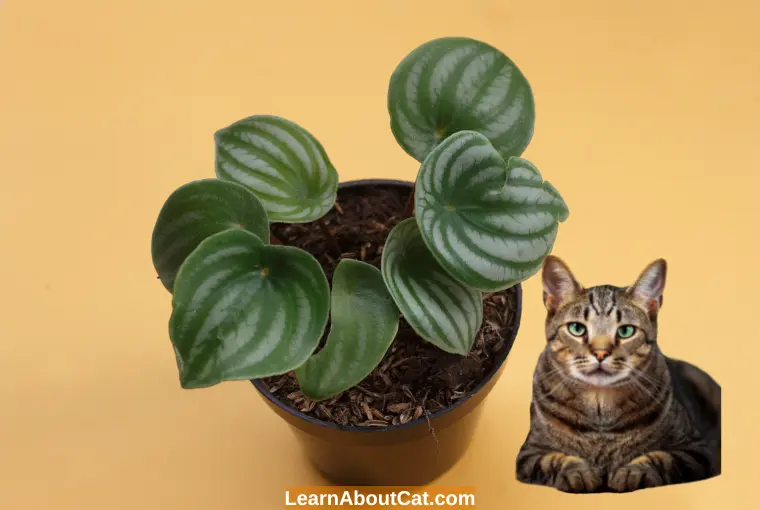
Despite having completely non-toxic leaves, the small peperomia takes home the prize. Their durability makes them even better. Cats may be challenging, so it’s no surprise that pet owners value plants with this trait.
Also Read: Are Snapdragons Poisonous To Cats?
Are All Types of Peperomia Safe for Cats to Eat?
The peperomia plant’s components and variants are safe and non-toxic. But be careful! It’s always possible to come across a rare or freshly domesticated variety of peperomia that poses a hazard because there are so many distinct types of this plant.
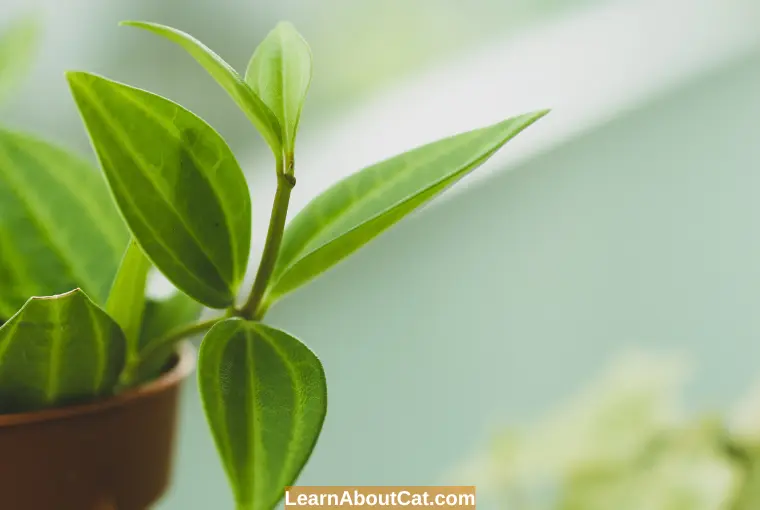
But any species or cultivar found in a nursery is safe for people and animals. Even though peperomia plants have been deemed non-toxic, cats that consume too much of them may have toxic-like side effects.
If you are prone to skin sensitivity to plant sap, wear gloves. In these situations, always wear gloves to shield your hands from poisons, pathogens, or spores. To weaker plants, illness is easily transmitted.
How to Keep Peperomia Out of Your Pet’s Reach?
Ensuring that your beloved pets do not have access to Peperomia plants can be easily achieved through the following strategies:
- Utilize a screen enclosure: Employing a screen enclosure provides a safe barrier that effectively keeps your pets outside, away from the Peperomia plants.
- Repellent sprays: Consider using non-aerosol pet repellent sprays, such as Hagan Non-Aerosol Pet Repellent, which can serve as an effective deterrent. Prior to usage, ensure that your pet does not have any allergies to the spray’s components.
- Decorative stones as a deterrent: Placing decorative stones around the soil of your Peperomia plants can be a practical workaround. While this method may dissuade cats from approaching the plants, it is less effective in deterring dogs. Keep in mind that dogs might be at risk of choking on the stones, so exercise caution.
- Restrict access to a separate room: If necessary, consider placing the Peperomia plants in a room that is off-limits to your pets. This provides an additional layer of protection.
- Training your pets: Through consistent training, teach your pets to avoid the Peperomia plants. Positive reinforcement and redirection techniques can help in reinforcing these boundaries.
Toxic House Plants Confused With Peperomia
It’s crucial to be aware of certain toxic houseplants that can be easily mistaken for Peperomia. Ingesting these plants can lead to various symptoms in pets, ranging from vomiting and diarrhea to potentially fatal consequences. To ensure the safety of your pets, it’s essential to familiarize yourself with these plants and take necessary precautions to keep them out of your pets’ reach.
Here are some commonly mistaken toxic house plants that resemble Peperomia:
- Rubber tree plant
- Philodendron
- Dieffenbachia
- Aglaonema
- English ivy
- Pothos
- Snake plant
- ZZ plant
Frequently Asked Questions
Is pilea peperomia toxic to cats?
Peperomia raindrop is not toxic to pets. This plant is cherished for its bright green, large, plump, teardrop-shaped leaves. This easy-to-care-for houseplant originates from Colombia and Peru. The plant’s fast growth rate gives any room for a vibrant presence.
Is green peperomia toxic?
Green peperomia is a non-toxic plant safe for pets, and the Peperomia family is also safe for your furry friends.
How to keep peperomia out of your pet’s reach?
Plants don’t have to go unless they’re on the toxic list, even though you should keep them away from your cat for two reasons: to prevent a sick cat and your peperomia from being attacked.
1. Make sure your cats cannot access your plants by putting them in an off-limits room.
2. If possible, place them up high so your cat cannot reach them.
3. Cat deterrent spray can help you prevent your cat from going near your peperomia if you spray it around it.
Warp UP!
Peperomia plants are generally regarded as safe for feline companions. According to reputable sources such as the ASPCA and the Pet Poison Helpline, they are not known to possess any toxic properties for cats. However, it’s essential to recognize that individual cats might exhibit specific sensitivities or allergies to certain plants.
But too much consumption causes digestive problems for feline buddies. Hence, it is advisable to closely monitor your cat’s behavior when introducing any new plant into your home. Should you observe any unusual symptoms or behaviors in your cat following its proximity to a Peperomia plant, it is recommended to seek guidance from your veterinarian for further assistance.
By establishing a cat-friendly environment that includes appropriate toys and secure spaces, you can help deter your cat from engaging in potentially harmful activities.
Related Posts:
Who is Isabella?
My name is Isabella, and I am a dedicated and knowledgeable cat enthusiast. With years of experience caring for cats and a deep love for felines, I made a mission to help other cat lovers navigate the challenges of cat ownership.

